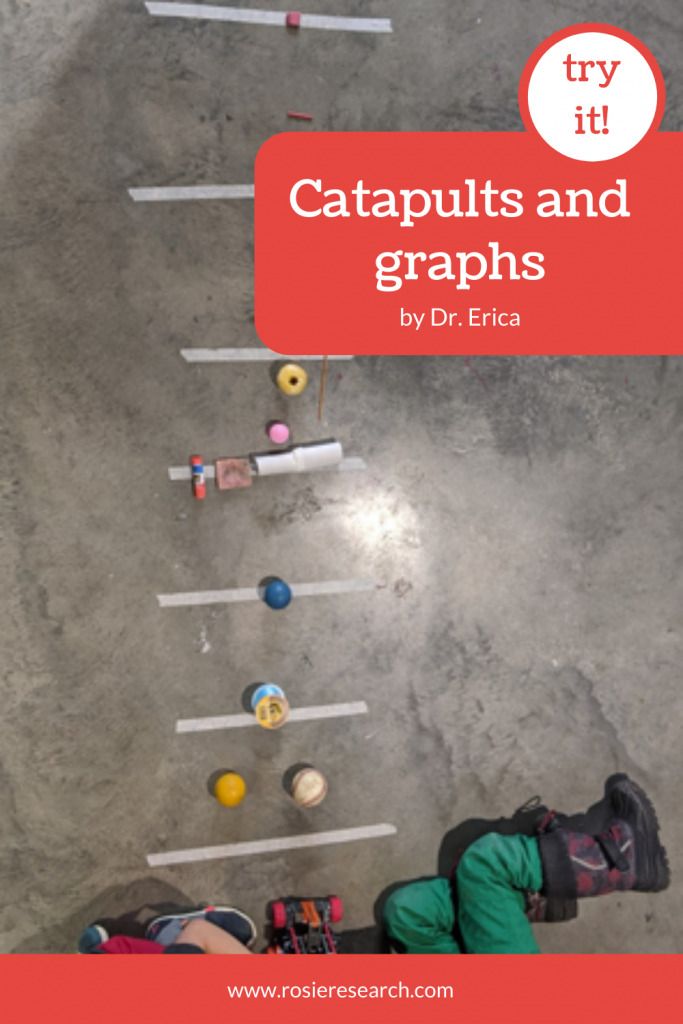Learn about projectile motion, how the angle of launch affects distance, and how to create from plans in this fun DIY ping pong ball launching project.
Jump to a section
Introduction
Project Ingredients
Project Setup
Tips and Tricks
Conclusion

Learning about projectile motion and mass
It’s a big month of projectile motion over here, and we have another awesome, and easy to build, projectile motion project for you. If you haven’t yet, you should check out our ping pong ball launchers that we made using 3D printed parts and 2×4 you should! Those projects were fun to build and really help students learn about how angle affects the launch distance.
In this project we turn to looking at how mass affects the launch distance. And this is tricky, because the lightest objects might not go the farthest as one would expect. In fact, a normal sized ping pong ball doesn’t do great for its weight mainly because of the impact of its crossectional area to its weight. I suggest that when selecting items you select them such that the weight is proportional to their size to make air resistance more negligable.
I love pairing these two projects with the University of Colorado’s PhET simulations because the two hands on projects gives you real world experience, while PhET allows kids to change launch angles, heights, masses, initial velocities, air drag…they can even change the size of the gravitational force in the simulation. It really allows kids to get hands on experience in building, testing, and data taking, and then take it to the next level with a simulation.
Why try this project?
Kids love to watch projectiles fly throughthe air, so why not add a little extra emphasis on learning at the same time? By adding in tidbits of high level learning with play we can truly prepare young kids to engage in science in high school and beyond.
Plus, this project allows for kids to ponder what will happen, then test it out, and ponder the results – which creates a LOT of space for learning. Like the ping pong ball launchers, you can also contribute to our community data sheet for added learning!
Project Ingredients

Common Supplies
- Balls of various sizes and weights
- Tape measure
- Masking tape
- Community data entry link
- Community data (graphs and tables)
Kids Science Project Setup

- Build your VEX catapult
- Mark out 1 foot increments in masking tape
- Launch a ball
- Measure the distance it went
- Measure its weight in grams
- Enter it into the community data sheet and launch something new!
Dive deeper into the relationship of mass and projectile motion

1. Make a graph without any numbers
If you have younger hands it might be a bit much to ask them to measure, weigh, and enter data, or maybe you want it to be more laid back than tracking data. A great way to still do this experiment without taking any data is to launch items and place them where they first bounce (not where they roll to).
In this way you can build up a pictoral graph of the data. Kids will see the heavier items staying closer to the catapult while the lighter items go much farther. Let them launch a huge collection of things you find lying around so they gather more data, then you can have a conversation about what items may have surprised them!
2. Wait…but mass isn’t in the projectile motion equations??
That’s true. Mass doesn’t show up in the equations that calculate the distance a projectile will go.
So why would mass change the range of the projectile? Think about that for a moment before reading on.
Here is the range equation for a projectile that is fired from, and lands on, the ground:
Range = (Initial Velocity)^2 x (sin (2*launch angle)) / g
No mass. Anywhere. In fact, if you look at any of the equations for projectile motion you will never see the mass.
That is because we look at the projectile after it has left the catapult/cannon/sling/hand/etc.
But the initial velocity depends on how hard we launch, or throw, the ball. And think about this: can you throw a bowling ball as far as you can throw a baseball? Why not?
Because it takes a higher force to accelerate the heavier bowling ball. If we have a constant force, like with our VEX catapult, that can only mean that heavier items are moving more slowly than lighter items when they leave the catapult. Those zippy lighter items then have a higher initial velocity and get to travel farther than the slow heavy items.
So while mass doesn’t expicitly show up in the range equation (or any other projectile motion equation), it is in there in the form of the inivital velocity!

Conclusions
I hope you have a ton of fun with this projectile motion project! Feel free to contribute to our community data collection by adding your own data here. To the left is a graph of what almost 50 elementary aged kids recorded for their VEX catapult launching project!